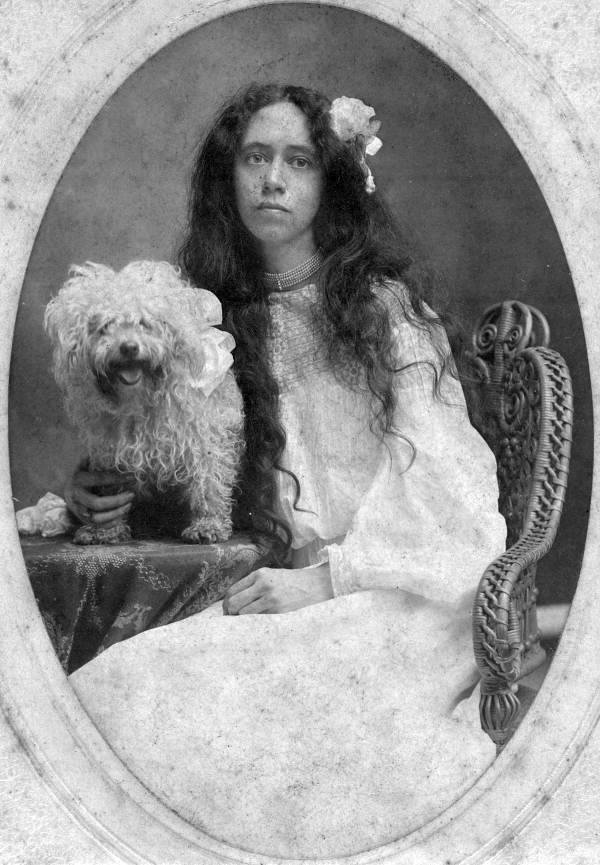The History of the Havanese

History of the Havanese and some call the Havana Silk Dog
The Havanese is the National dog of Cuba and the only breed native to the island. The Cuban love of the charming little Bichon Havanese is evident in their use of his likeness on a 1992 souvenir issue postage stamp.
Sadly, the actual origin of the Havanese breed is foggy at best. Century’s of conjecture and mystery have blurred the specifics and left much of the early development of the little breed to a patchwork of fact and fiction.
Most historians seem to agree the roots of today’s Havanese dog appear to have originated in the western Mediterranean area. Early ship’s logs from the sixteenth century speak of dogs that traveled with the families of Spanish aristocracy to Cuba. At that time the Bichon breeds were quite popular in Europe as lapdogs. The enchanting little dogs were quite small and easily carried. They were quick to learn, adept at performing tricks and games, and were all around charmers. They became a favorite lapdog of the Cuban Aristocracy, making their homes on the vast sugar plantations owned by these wealthy patrons of the breed. Litters were never offered for commercial sale. Instead they were planned for the express purpose of sharing with intimate friends and family members. The little dogs were rarely seen outdoors, other than with their mistresses during promenades.
So desired were the dogs, that stories abound of ships captains offering them as gifts to the affluent wives of Cuban businessmen in the hopes of garnering business for the sea merchants. These dogs most likely came from Tenerife, one of the few ports open to Cuba for trade at the time, which would have made the dogs accessible to the ships passing through. The Dog of Tenerife was able to develop with out much outside influence, becoming the common ancestor to all Bichon breeds.
Once on the Island of Cuba, the dogs seemed to acclimatize to the tropical island extremely well. They became quite heat-tolerant. They developed profuse silky coats, which protected them from the sun and heat, much as a sari protects the women of India. The coat’s silk floss texture became one of its distinctive features. The coats were never clipped so as to allow the light airy layers to protect the dog from the tropical rays, and the hair was allowed to fall forward over the dog’s eyes to protect them from the intense sunlight.
Even as the “Bichon Havanese” emerged as a favorite of Cuban Aristocracy, they also found their way to Europe. European Aristocracy vacationing in Havana became quite enchanted by the dogs, returning home with them at the end of their holidays.The Havanese proceeded to find favor in the courts of Spain, France, and England. By the mid-eighteenth century, the little dog of Havana was quite trendy. Queen Victoria owned two and Charles Dickens owned one. During the dog’s brief appearance in Europe, they could be found enchanting audiences both at dog shows, and performing in circus acts. Unfortunately, none are known to have survived the turbulence of the century in Europe.
Near the start of the twentieth century in Cuba, slavery was being replaced by mechanized equipment. The aristocratic families who had closely guarded the ownership of the dogs were disappearing, no longer able to maintain their vast sugar plantations without the cheap labor they were accustomed to. With the absence of their wealthy patrons, the Bichon Havanese were now free to win the hearts of the general public, ingratiating themselves into Cuban family life, and becoming the preferred dog of the common people.
Many wealthy Cubans migrated from the island of Cuba after the Socialist Revolution of the 1960’s. By that time, the Havanese had virtually disappeared throughout the world, and the little dogs were on the verge of extinction. Three families are known to have smuggled their Bichon Havanese aboard ships with them. The Perez and Fantasio families immigrated to Florida, while Ezekial Barba went to Costa Rica. Once settled, these three families worked together to preserve the breed by combining their gene pools.
In the early 1970’s, Dorothy and Bert Goodale in Colorado were able to acquire 11 dogs from the three families. All the Havanese in the world today, except for possibly some in “Iron Curtain” countries, and those remaining in Cuba, stem from the 11 dogs the Goodale’s acquired from the Perez, Fantasio, and Barba lines.
In 1991, 15 purebred havanese were found in Cuba and a carefully supervised breeding program was put into place, using them as foundation stock with the Cuban Bichon Habanero Club overseeing their resurgence.
